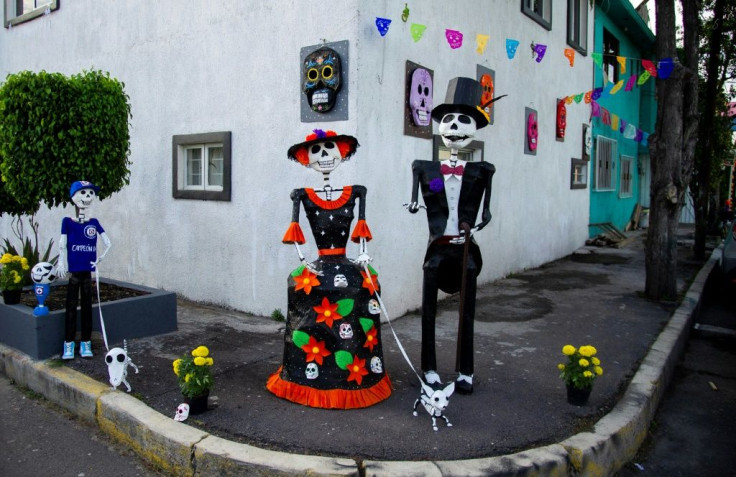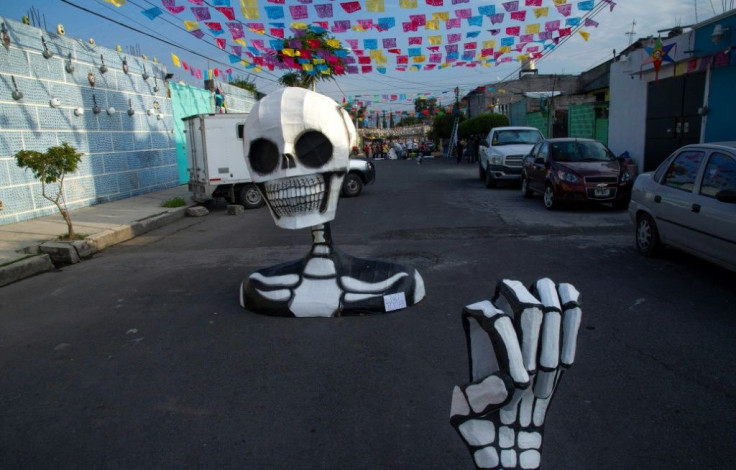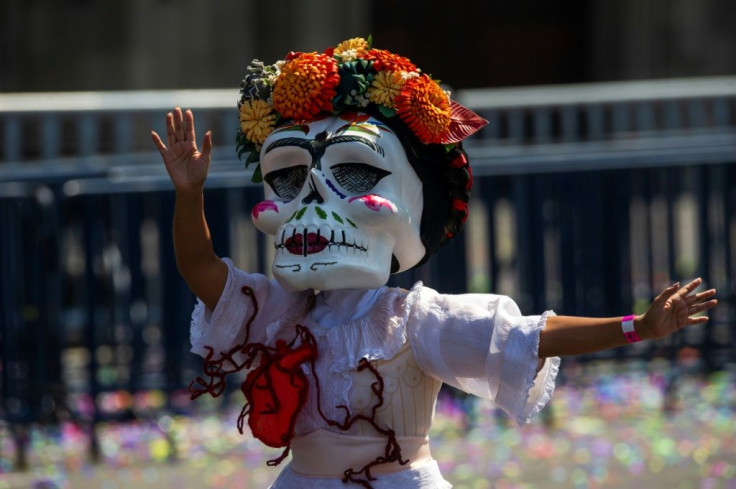Pandemic-hit Mexican Town Awaits Reunion With Dead
Sandra Jimenez lost two sisters to the coronavirus, which devastated her small Mexican town. On Monday she awaited the return of their souls for the Day of the Dead.
Many events linked to what is considered Mexico's most important festival were canceled last year as the Latin American country battled to contain the virus.
But with a third wave of infections now subsiding, this year has seen the return of cemetery visits and other public celebrations, including a parade through the capital.
In Santa Cruz Atizapan, in the central State of Mexico, church bells rang out for months at the height of the pandemic in a show of respect for the many victims.
The residents found it so traumatizing that they asked for the tolling to stop, Jimenez said as she tidied the graves of relatives in the town's cemetery.

"It was horrible, distressing!" the 64-year-old said.
The Day of the Dead, which is rooted in indigenous culture, centers around the belief that the souls of the dead return on the night of November 1-2.
Families put out altars with pictures of relatives and their favorite foods, along with candles and decorative skulls.
Atizapan is the Mexican municipality with the highest mortality rate due to Covid-19 relative to its population size, according to data from the National Autonomous University of Mexico.

The town of 12,894 people has registered 303 deaths from coronavirus, with a peak seen at the beginning of this year.
"Two or three people died every day. We were burying them up until the night," said Freddy Gonzalez, who manages the town's cemetery.
Before the crisis, annual deaths were around 60, so the graveyard had to expand its capacity and schedule to keep up, he said.
"But it's calmer now. There are two or three deaths every month," the 29-year-old said.
With the pandemic easing, relatives were allowed to enter the cemetery to tidy and decorate the graves before the Day of the Dead.

The country of 126 million has an official Covid-19 death toll of more than 288,000 -- one of the highest in the world.
Jimenez's sister Estela died in June 2020. In December, the coronavirus claimed the life of another sister.
Maria Luisa, who was 74, had continued to travel by public transport to her job as a domestic worker in Mexico City, putting her at risk of infection.
Estela, 76, died when the oxygen in her tank ran out on the way to a clinic.
"I gave her mouth-to-mouth resuscitation," but it was not enough, Jimenez said.
Atizapan only has one hospital providing basic care and many patients faced a one-hour journey for treatment, according to a paramedic working in the area.
At critical moments in the pandemic the hospitals were overwhelmed, said the man, who attended hundreds of emergencies in the town.
"Crying was not enough to release the emotion. We wanted to throw in the towel, but we had to continue," said the 27-year-old, who did not want to be named.
To honor those who died and try to ease the pain, the residents of Atizapan prepared colorful altars for the visiting souls.
"Not even the pandemic dampened our enthusiasm," said Antonio Briseno, 35, who lost his mother-in-law during the pandemic.
"We wait for our loved ones with much affection and respect," said Briseno, who put out photos of his mother, grandmother and mother-in-law along with fruit, beans, rice, chicken, chocolate, brandy and cigars.
Like his neighbors, he scattered marigold petals on the floor to guide the spirits to the altar.
Gonzalez, the cemetery manager, placed an offering in the chapel for the people whose bodies lie unidentified.
The paramedic dedicated his altar to those he saw pass away during the pandemic.
"Many died with empty stomachs," he said.
© Copyright AFP 2024. All rights reserved.











